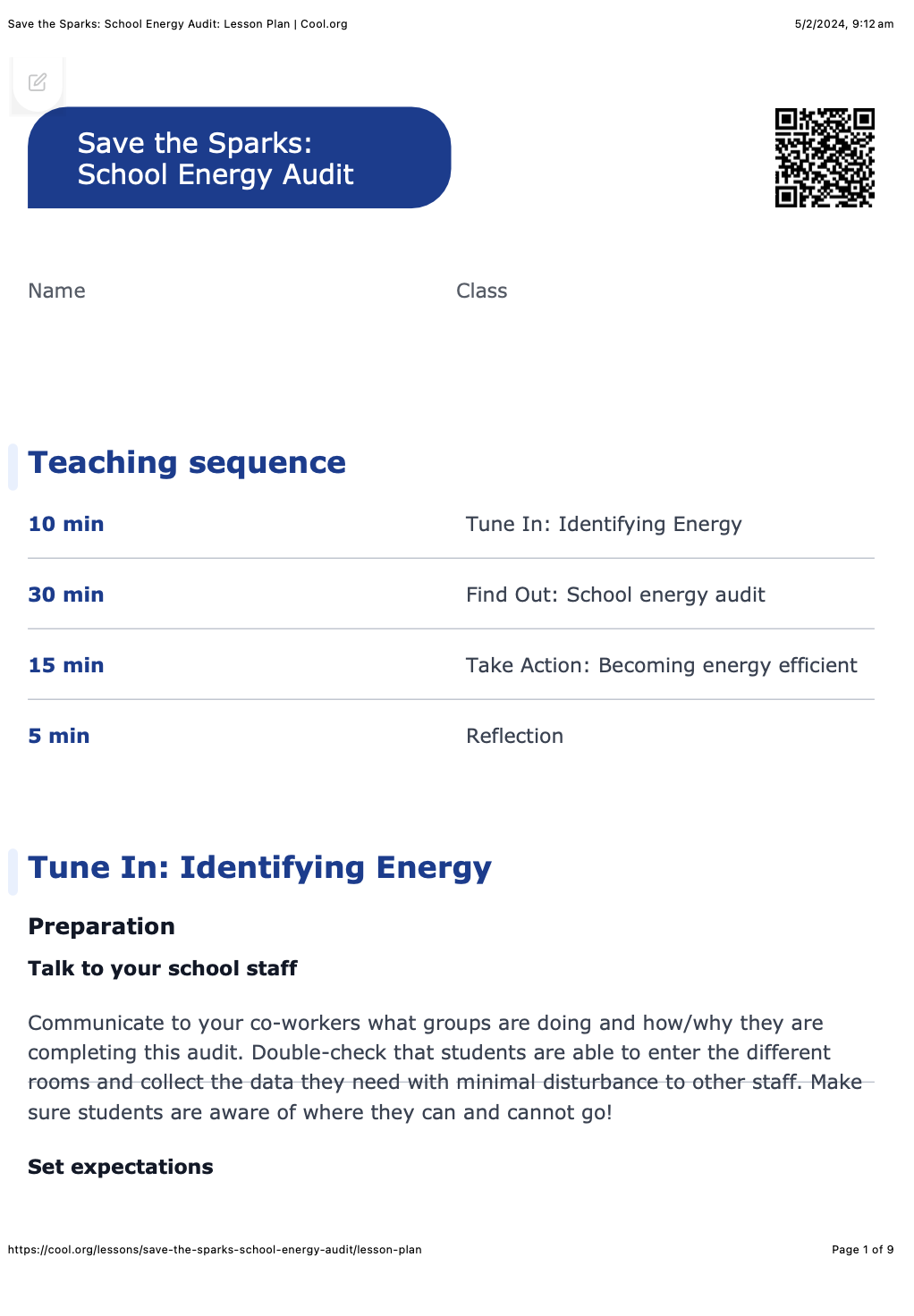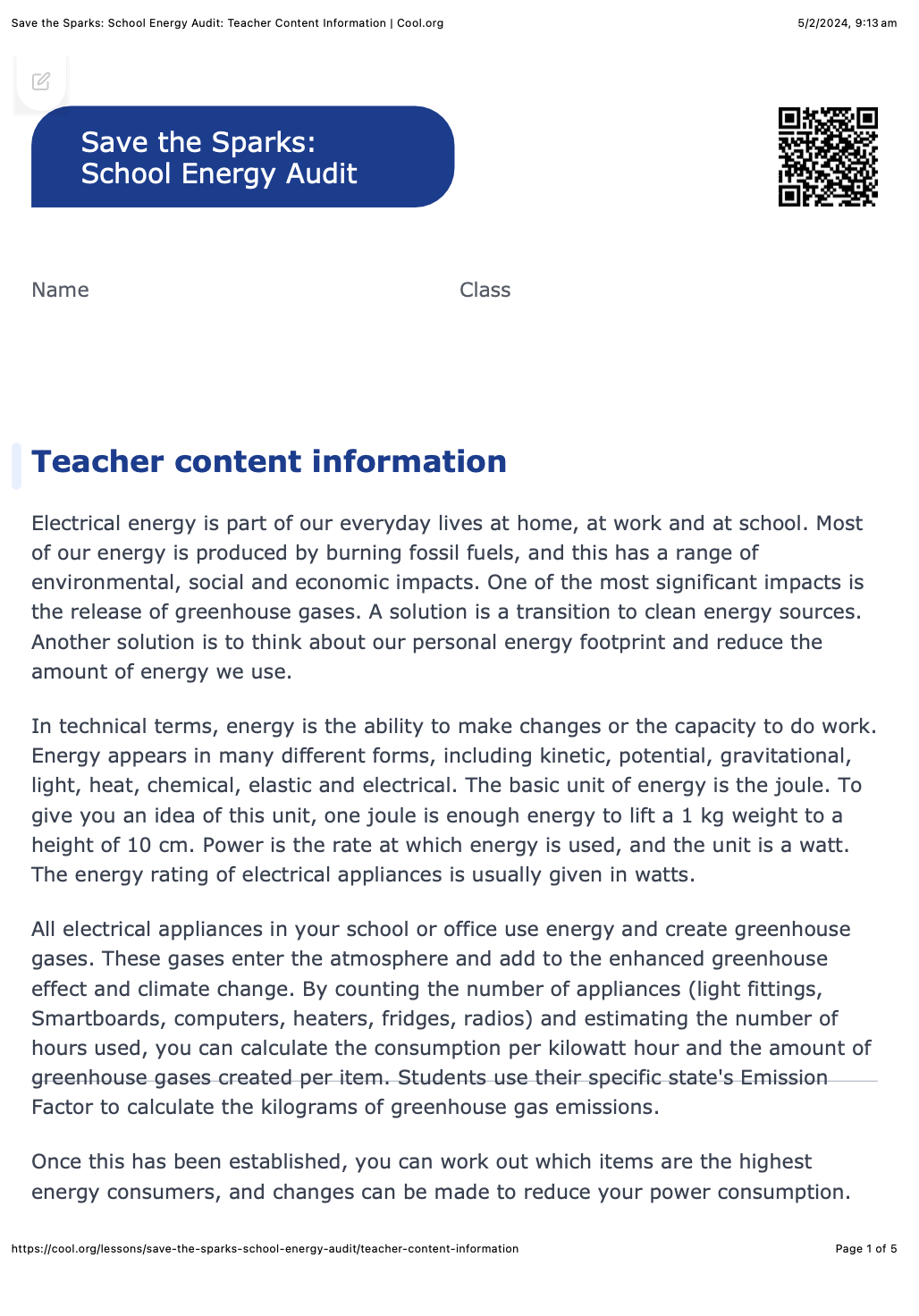Lesson summary
How energy efficient is your school? Students will conduct a whole school energy audit and using their data, calculate usage, kilowatts and greenhouse gas emissions. They will consider solutions and make recommendations on how energy use could be reduced at their school.
Learning intentions:
Students will...
- conduct an energy audit of their school to identify wasted energy, consider remedies, and propose a solution.
Success criteria:
Students can...
- recognise the relationship between energy use and greenhouse gas emissions
- identify where energy consumption can be reduced at their school and home.
Lesson guides and printables
Curriculum links
Select your curriculum from the options below.
Lesson details
Skills
This lesson is designed to build students’ competencies in the following skills:
- collaboration
- communication
- curiosity
- initiative
- problem solving
- reflection
- social skills
Curriculum Mapping
Australian Curriculum (v9.0) content description:
Year 5 & 6, Design and Technology
- negotiate design criteria including sustainability to evaluate design ideas, processes and solutions (AC9TDE6P04)
- explain how characteristics and properties of materials, systems, components, tools and equipment affect their use when producing designed solutions (AC9TDE6K05)
Cross-curriculum priority: Sustainability
General capabilities: Critical and Creative Thinking, Numeracy
Syllabus outcomes:
- ST3-1WS-S plans and conducts scientific investigations to answer testable questions, and collects and summarises data to communicate conclusions
- ST3-2DP-T plans and uses materials, tools and equipment to develop solutions for a need or opportunity
Relevant parts of Year 5 & 6 achievement standards: Students explain how people design products, services and environments to meet the needs of communities, including sustainability. Students select and justify design ideas and solutions against design criteria that include sustainability.
UN Sustainable Development Goals
UNSDG 7: Ensure access to affordable, reliable, sustainable and modern energy for all
- Target 7.3 By 2030, double the global rate of improvement in energy efficiency
Resources Required
- Clipboard and pen
- Device to play media to the class
- Student worksheet
Additional Info
We have joined forces with Smart Ease to craft these educational materials.
Leveraging their expertise and knowledge, we've designed curriculum-aligned learning resources to empower your school in understanding energy usage. These resources aim to assist schools in adopting sustainable solutions for reducing their environmental impact.
Smart Ease has supported thousands of organisations, businesses, and schools in decarbonising and digitizing their operations through innovative funding solutions.
This partnership with Cool.org is an initiative under Smart Ease's 1% for the Planet program, showcasing their dedication to educating the upcoming generation about sustainable practices.
Level of teacher scaffolding: medium - scaffold and direct student investigation
Related Professional Learning
In this course, you will find out how STEM can be used to solve real-world problems, including those relating to sustainable development.




Welcome back!
Don't have an account yet?
Log in with:
Create your free Cool.org account.
Many of our resources are free, with an option to upgrade to Cool+ for premium content.
Already have an account?
Sign up with:
By signing up you accept Cool.org's Terms and Conditions(Opens in new tab) and Privacy Policy(Opens in new tab).